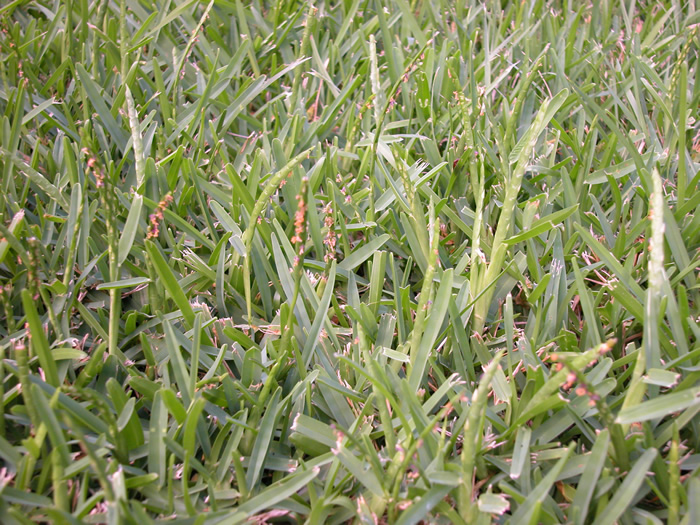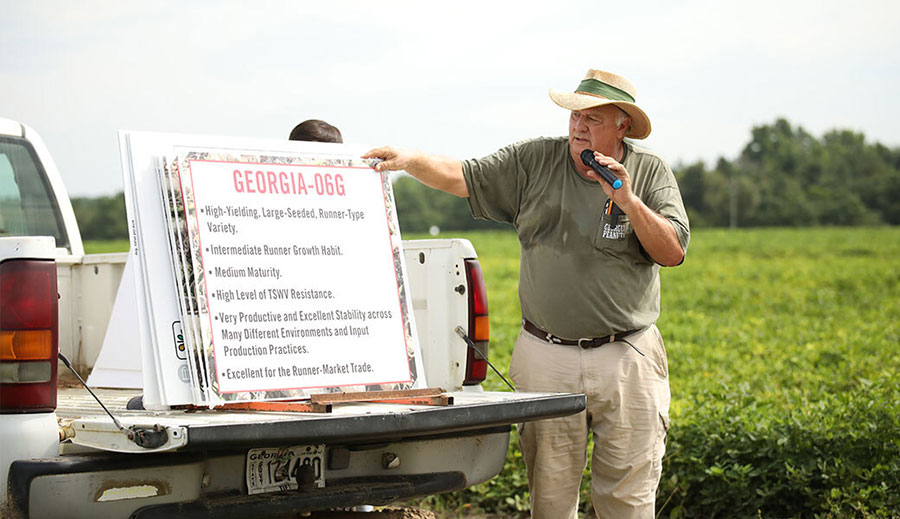What type of plant makes up most of the lawns in Georgia? If you shrugged and answered “grass,” you’re not alone.
Homeowners spend hours mowing and treating their lawns, but many don’t know much about the plant that makes up the green expanse between their driveways and front doors.
If everything is going well — a lawn remains green and relatively free of weeds — homeowners may not worry much about the type of turfgrass they have. But if that grass starts to turn brown, or if weeds start to become unsightly, the type of grass in that lawn suddenly becomes very important.
“Not all turfgrass species have the same mowing and fertilizer needs,” said Clint Waltz, a University of Georgia Extension turf scientist in the College of Agricultural and Environmental Sciences. “Also, some are more susceptible to certain pests. Therefore, knowing what grass you have is important for proper maintenance.”
The most common warm-season lawn grasses in Georgia are bermudagrass, centipedegrass, St. Augustinegrass and zoysiagrass. The typical cool-season species used on lawns is tall fescue.
Bermudagrass is made up of short, 1/8 inch-wide blades with rough sides and pointy tips. It can also be identified by the presence of both above ground runners, called stolons, and underground runners, called rhizomes. It is hardy across Georgia.
Centipedegrass has a wider blade than bermudagrass, but is still less than 1/4 inch wide, and a strong center vein. The blade appears to fold along the center vein. Healthy centipedegrass will be a Granny Smith apple green.
Centipedegrass is a low-growing grass that is suited for lawns across much of Georgia but used extensively from Macon southward. The cultivar TifBlair is adapted for Georgia, as it is cold hardy for the area from Atlanta to the northern part of the state. It spreads by stolons only, and doesn’t have underground rhizomes.
The leaves of St. Augustinegrass are also folded along a strong center vein, but they have a broader blade of at least 1/4 inch, with a boat-shaped tip. St. Augustinegrass has aggressive stolons and no rhizomes. It is a dense, blue-green turf best suited to the coastal plain although it will survive in Atlanta.
Zoysiagrass has short, sharp blades that form a medium to fine textured lawn. It spreads by both rhizomes and stolons and needs minimal fertility. Many zoysiagrasses can tolerate partial shade, as well as full sun. It can be successfully planted throughout Georgia.
Tall fescue is a cool-season species with a fine leaf texture and a dark green color. Because tall fescue is a cool-season species, it looks its best in fall, winter and spring. When temperatures get hot, tall fescue’s canopy thins-out — a natural defense mechanism to survive environmental stresses. When conditions become favorable, tall fescue typically rebounds and resumes growth. It grows best on lawns in northern Georgia.
Each type of turfgrass grown in Georgia requires different care — different mowing heights and fertility schedules. By selecting a turfgrass based on its characteristics, homeowners can get a great looking lawn with barely any extra effort.
Also, when disease or weed problems do arise, finding solutions can be easier if you know the species growing in your landscape.
For more information on Georgia turfgrass and for species-specific lawn care calendars, visit the UGA Extension turfgrass site www.GeorgiaTurf.com or call your local UGA Extension agent at 1-800-AskUGA1.








